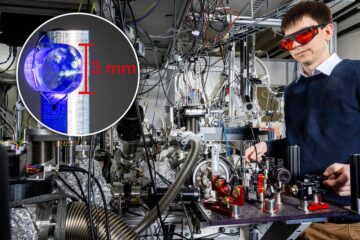Jaw Positioning Device – Precise midface-related maxilla repositioning during orthognathic surgery

Occlusion irregularities can surgically be treated by corrective osteotomies of mandible and / or maxilla. However, exact midface-related repositioning of the maxilla after LeFort I Osteotomy remains challenging, as the mobilised parts of the jaw are free to move three-dimensionally. Previous approaches are all afflicted with considerable inaccuracy and some of them are associated with additional radiation exposure caused by three-dimensional imaging.
This invention allows exact midface-related maxilla repositioning during mono- or bimaxillary surgery. The jaw positioning device comprises three splints (primary-, secondary- and reference splint) and three connection bars. The maxillary shift is planned preoperatively by model-surgery and encoded by the difference between primary- and secondary splint. There is no need for navigational systems or complex bone models based on three-dimensional imaging. During surgery, the primary splint, which fits exactly to the occlusional surfaces of the maxillary teeth, is placed on the dental arch. The primary splint’s outer face features a definded surface profile, on which the reference splint is placed. In the next step, connection bars to three intraorally accessible points of the patient’s bony midface are fixed on the reference splint. In this way, the reference splint can be replaced exactly in a well-defined midface-related position, also without the primary splint. After LeFort I osteotomy, the maxilla can be precisely positioned at the target position by use of the secondary splint, that also fits exactly to the corresponding surface of the reference splint.
Weitere Informationen: PDF
PROvendis GmbH
Tel.: +49 (0)208/94105 10
Ansprechpartner
Dipl.-Ing. Alfred Schillert
Media Contact
Alle Nachrichten aus der Kategorie: Technologieangebote
Neueste Beiträge

Atomkern mit Laserlicht angeregt
Dieser lange erhoffte Durchbruch ermöglicht neuartige Atomuhren und öffnet die Tür zur Beantwortung fundamentaler Fragen der Physik. Forschenden ist ein herausragender Quantensprung gelungen – sprichwörtlich und ganz real: Nach jahrzehntelanger…

Wie das Immunsystem von harmlosen Partikeln lernt
Unsere Lunge ist täglich den unterschiedlichsten Partikeln ausgesetzt – ungefährlichen genauso wie krankmachenden. Mit jedem Erreger passt das Immunsystem seine Antwort an. Selbst harmlose Partikel tragen dazu bei, die Immunantwort…

Forschende nutzen ChatGPT für Choreographien mit Flugrobotern
Robotik und ChatGPT miteinander verbinden… Prof. Angela Schoellig von der Technischen Universität München (TUM) hat gezeigt, dass Large Language Models in der Robotik sicher eingesetzt werden können. ChatGPT entwickelt Choreographien…

















